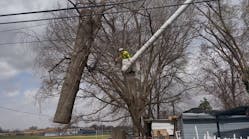Every day, nine people succumb to injuries from distraction-related crashes in the United States and an additional 1,000 people experience non-life-threatening injuries from those incidents, according to the Federal Communications Commission (FCC).
The National Highway Traffic Safety Administration (NHTSA) defines distracted driving as “any activity that diverts attention from driving, including talking or texting on your phone, eating and drinking, talking to people in your vehicle, fiddling with the stereo, entertainment or navigation system — anything that takes your attention away from the task of safe driving”.
The National Conference of State Legislatures (NCSL) estimates “more than 220 million people in the United States subscribe to wireless services, and it is estimated that as many as 80% of those subscribers use their phones while driving.”
In addition to the “standard” interruptions, the number of distractions while driving seems to multiply every day. Think about the advancements of our mobile devices and interactive billboards and signs we see while behind the wheel.
Hands on the wheel, eyes on the road
In 2021, our ACRT Services family of companies' employees drove more than 25 million miles. It’s incredibly important that our fleet department consider the other variables related to our industry.
Weather patterns. It’s important to monitor the weather for current and past travels by employees. For example, someone driving in Arizona might be less familiar with operating their windshield wipers due to a minimal annual rainfall and become distracted, versus someone in Ohio who likely activates their wipers regularly due to rain and snow.
Traffic patterns. Certain times of day may require different travel patterns. Think about people going to and leaving work. Think about school zones. Think about local happenings.
Driving location. Depending on the type of work and location, not all driving takes place on a street. A lot of traveling in our industry takes place off the highway on right-of-ways (ROWs) — especially when workers are trying to locate other vendors and tree crews, looking at maps, trying to find locations, and so on.
Infrastructure growth. We’re seeing expansive growth of infrastructure in different areas throughout the country. I’ve spent a lot of time in Greenville, S.C., and have watched the infrastructure boom over the past few years. This growth leads to new construction, highways, and roads — conditions that are out of our control and can distract drivers at a moment’s notice.
So, what can we do to prevent distracted driving? The FCC suggests taking the following precautions.
Be clear. Make sure employees understand that they should not use wireless devices while driving. Discuss how taking their eyes off the road – even for a few seconds – could cause someone injury or even death. “At 55 miles per hour, sending or reading a text is like driving the length of a football field with your eyes closed,” according to the Centers for Disease Control and Prevention (CDC). Your brain is distracted for 27 seconds after a call or text, so red lights and stop signs are not the time to use a device.
Lead by example. Set rules for drivers, and yourself, regarding distracted driving. Never text while driving – if you are driving and you need to text or talk on the phone, pull over to a safe place before doing so.
Be engaged. Talk to your peers about the importance of driving without distractions.
Making focused driving a priority
Many causes of incidents are considered preventable. With some simple safety measures and tips to follow, you can help ensure your team members make it home to their families each night. At ACRT Services, we recommend several safety solutions, including a three-second safety cushion while driving. By creating a three-second space between you and the vehicle in front of you, you will have more time to react if the car in front of you suddenly stops or swerves.
From the fleet management perspective, we’re also working to curb distracted driving by introducing better technology, processes, and resources to encourage focused driving. With the help of telematics resources like Geotab, we can gather real-time information and identify trends faster, before they have the opportunity to become dangerous habits — enabling not only our organization but also our partners, to be more intuitive and precise.
When it comes to our utility vendors, we aren’t just a third party — we’re partners — we just have different names on our hardhats and trucks. Driving safely affects everything and everyone.
My mantra is, “Safety is a full-time job, don’t make it a part-time practice.” I stand by those words in all aspects of life, whether I’m on the road or in the office. If something gets your full attention, such as driving, you get a better product, you get to go home every night, and your company gets to keep operating.
April is Distracted Driving Awareness Month and I invite you to make safety a full-time job by taking the National Safety Council (NSC) Just Drive Pledge with me and committing to driving distraction-free.


